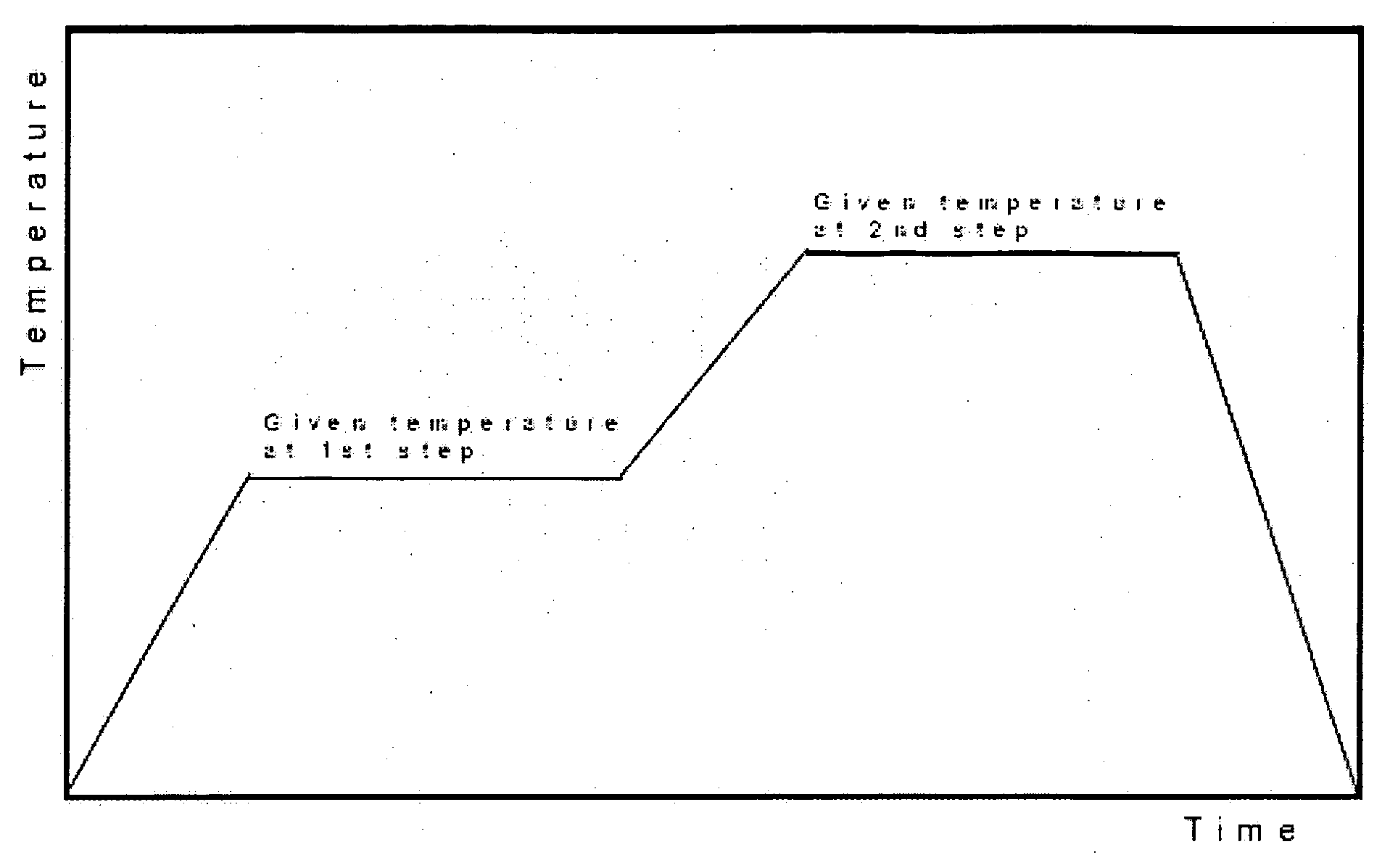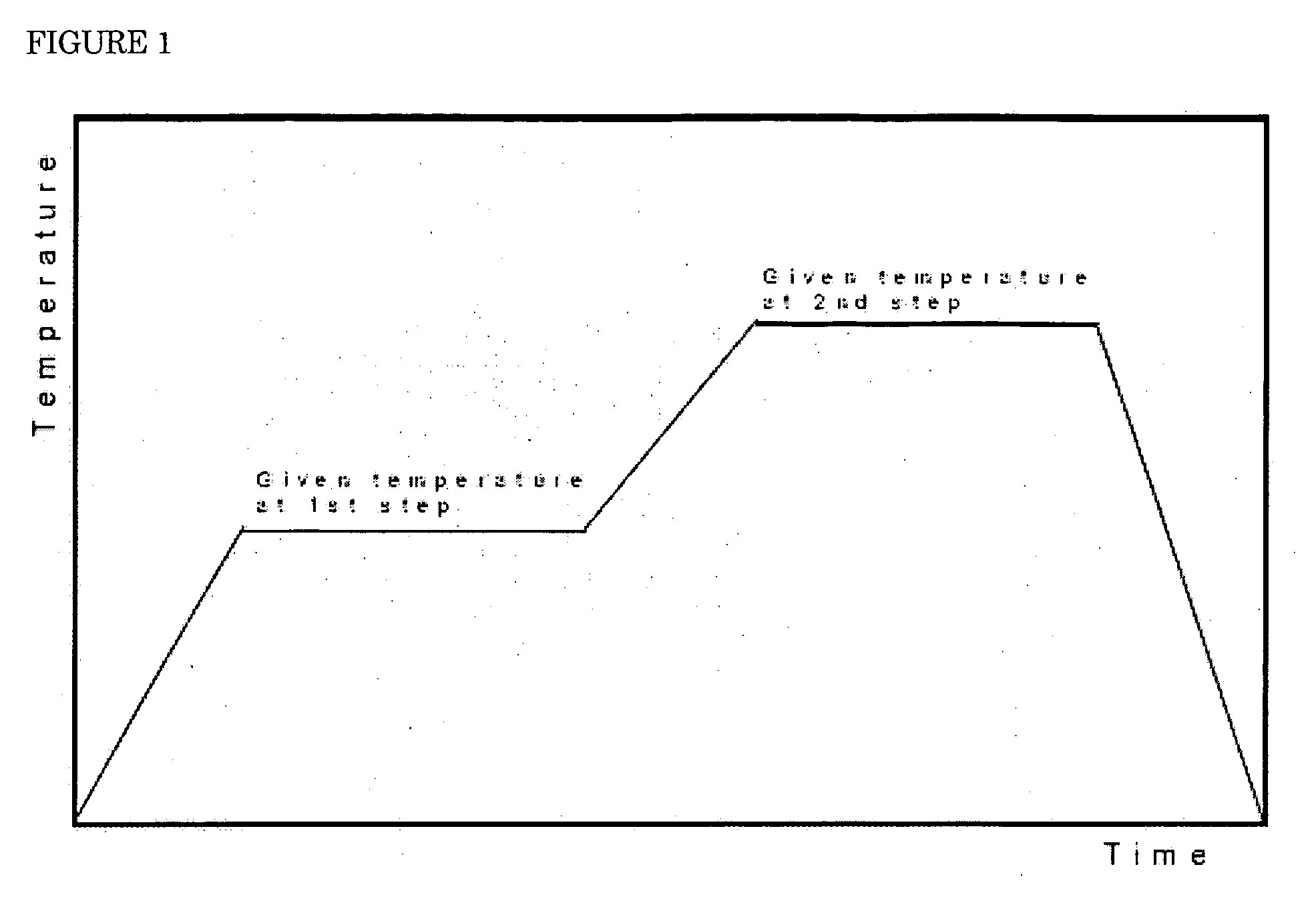Lithium-manganese composite oxides for lithium ion battery and process for preparing same
a lithium ion battery and composite oxide technology, applied in manganates/permanganates, non-metal conductors, cell components, etc., can solve the problem of difficult to search an optimal set, and achieve excellent cycle properties, good coating properties, and high battery capacity
- Summary
- Abstract
- Description
- Claims
- Application Information
AI Technical Summary
Benefits of technology
Problems solved by technology
Method used
Image
Examples
example 1
Influence of Particle Size Distribution
[0090]A suspension of 135 g of lithium carbonate in 320 mL pure water was prepared, and pH thereof was adjusted to 7.5 by blowing carbon dioxide gas into it. Separately, a solution of 266 g manganese chloride and 17 g aluminum chloride in 300 mL pure water was prepared. The solution was dropped into the above-mentioned suspension in 200 minutes, to prepare a carbonate containing lithium, manganese and aluminum (mixture of lithium carbonate, manganese carbonate and aluminum carbonate).
[0091]The carbonate was washed and filtrated with a saturated lithium carbonate solution to prevent lithium carbonate elution, and dried by hot-air at 110° C.
[0092]The materials having different particle size shown in Table 1 were prepared by oxidizing the carbonate raw material in various oxidizing conditions, and then the coating property of them was studied. When the content of each element was measured by ICP-MS to determine the composition, it was confirmed th...
example 2
Influence of Specific Surface Area and Tap Density
[0093]The carbonate containing lithium, manganese and aluminum was prepared in the same way as Example 1 with the exception that the amount of lithium carbonate was 125 g.
[0094]The materials having different specific surface areas and tap densities shown in Table 2 were prepared by oxidizing the carbonate raw material in various oxidizing conditions. When the content of each element was measured by ICP-MS to determine the composition, it was confirmed that Al substitution rate was 5% (y=0.1 in Li1+xMn2−yMyO4). Further, it was confirmed, by X-ray diffraction, that all of the oxidized materials were spinel type lithium-manganese oxide. Further, it was confirmed, by observation with SEM, that the materials formed the secondary particles.
example 3
Influence of Lithium Ratio and Lattice Constant
[0095]An aqueous solution containing chloride of manganese and aluminum was prepared in the same way as described in Example 1. Fluids were prepared by suspending 95 g (3-1˜3-3), 115 g (3-4˜3-6), 125 g (3-7˜3-9), 135 g (3-10˜3-12) and 155 g (3-13˜3-15) of lithium carbonate into 320 mL of pure water, and pH of the fluids were adjusted to 7.5 by blowing carbon dioxide gas into them. To these fluids, the solution of chloride was dropped in 200 minutes, and thus, the carbonates containing lithium, manganese and aluminum (mixture of lithium carbonate, manganese carbonate and aluminum carbonate) were prepared.
[0096]The materials having different lithium ratio and lattice constant shown in Table 3 were prepared by oxidizing the carbonate raw materials in various oxidizing conditions. When the content of each element was measured by ICP-MS to determine the composition, it was confirmed that Al substitution rate was 5% (y=0.1 in Li1+xMn2−yMyO4)....
PUM
| Property | Measurement | Unit |
|---|---|---|
| particle size | aaaaa | aaaaa |
| particle size | aaaaa | aaaaa |
| particle size | aaaaa | aaaaa |
Abstract
Description
Claims
Application Information
 Login to View More
Login to View More - R&D
- Intellectual Property
- Life Sciences
- Materials
- Tech Scout
- Unparalleled Data Quality
- Higher Quality Content
- 60% Fewer Hallucinations
Browse by: Latest US Patents, China's latest patents, Technical Efficacy Thesaurus, Application Domain, Technology Topic, Popular Technical Reports.
© 2025 PatSnap. All rights reserved.Legal|Privacy policy|Modern Slavery Act Transparency Statement|Sitemap|About US| Contact US: help@patsnap.com


